Withlacoochee River System Update - 3/1/2023
Southwest Florida Water Management District sent this bulletin at 03/01/2023 04:43 PM ESTDry Weather Continues; Water Levels Decline in February
Rainfall:
- October through May is our dry season in Florida. During this time, we average about 2-3 inches of rain per month.
- So far, 2023 has been even drier.
- Our region received 1 inch of rain last month, only about a third of the historical average for February (2.8 inches).
- So far this year (Jan-Feb) our region has received just 2.4 inches of rain, much lower than the combined historical average (5.7 inches) for those two months.
- Region-wide aquifer (groundwater) levels have been slowly declining and are currently in the 48th percentile, slightly below average, and lower than they were a year ago (66th percentile).
- Flow in area springs is also slowly dropping as aquifer levels naturally decline this time of year from less rainfall.
- The map below shows February rainfall totals. Almost all areas were below average last month.
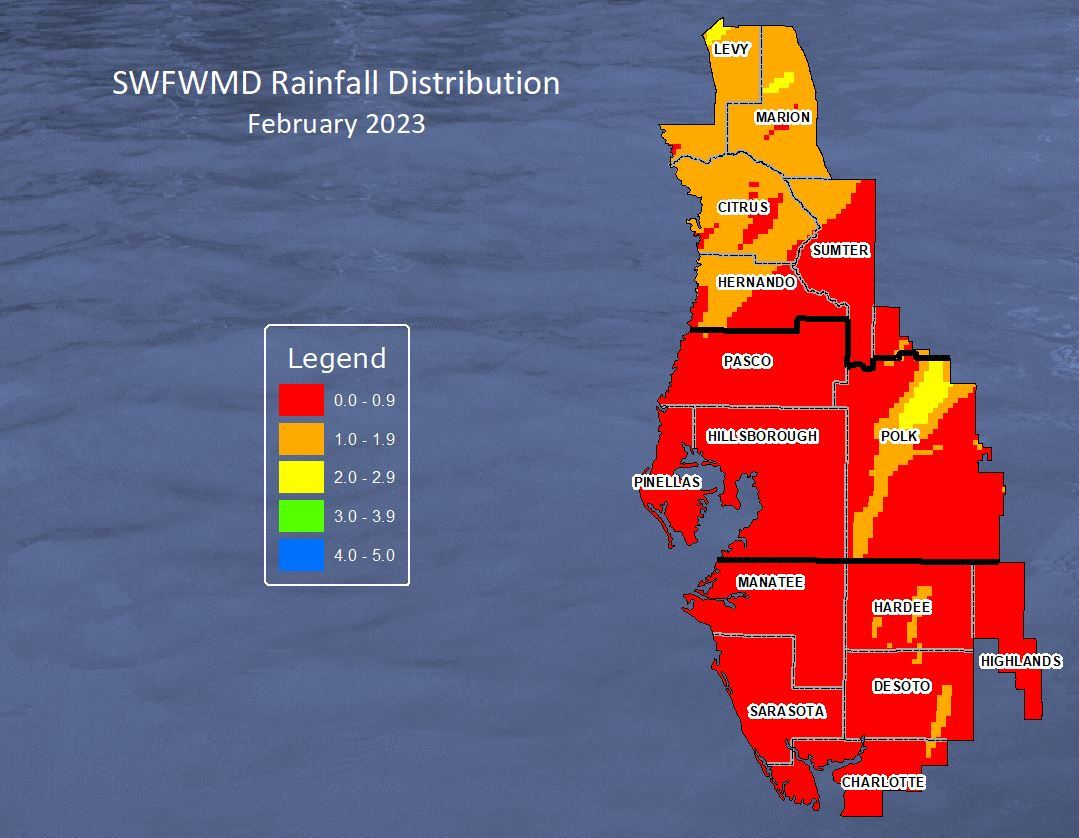
Withlacoochee River (from the Green Swamp downstream past Hwy 200):
- When early explorers first discovered the Withlacoochee River, their travel was challenged by the river’s vast floodplain swamps.
- Thanks to the foresight of early water managers, much of this natural swampland along the river has been preserved as conservation land.
- Today, these swamps and wetlands are critical for the river’s function, helping to store flood waters and filter incoming flows to improve water quality.
- Right now, many of these swamps are dry and much of the river’s flow is originating from the underlying aquifer.
- River levels and flows naturally decline this time of year due to less rainfall.
- Over the past month, river levels have dropped an average of 14 inches.
- River flows declined an average of 49% in February.
- Despite these recent declines, river levels and flows are currently at or above last year’s levels, due to later wet season rains in 2022.
- The table below compares current river levels and flows to what they were last month and last year.

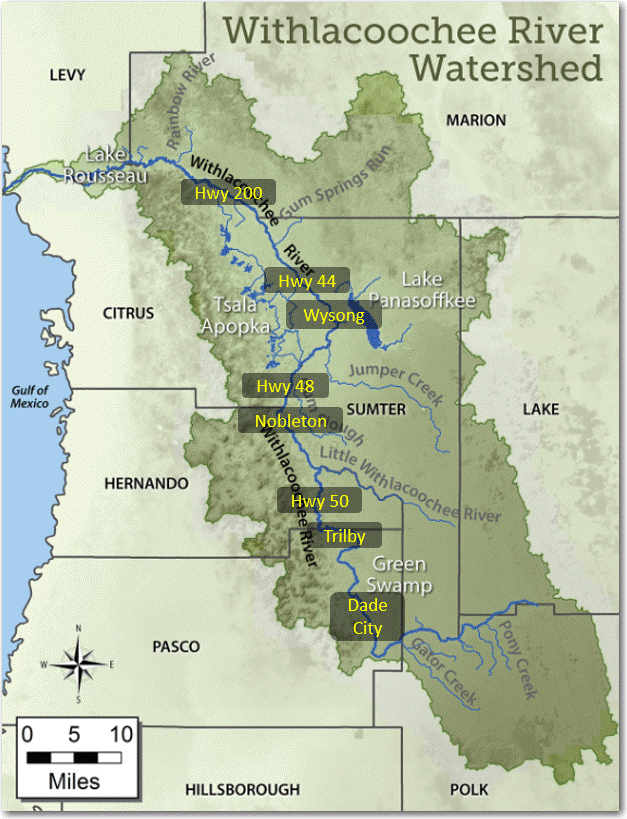
Tsala Apopka Chain of Lakes:
- With minimal rainfall in recent months, water levels throughout the Tsala Apopka Chain of Lakes continue to decline.
- Since mid-November, lake/canal levels have fallen nearly a foot, including a 3 inch drop last month.
- This time of year, water naturally leaves the lake chain through evaporation and downward leakage to the underlying aquifer.
- Over the next few months, as temperatures continue to rise and plants start growing again, we can expect lake levels to drop quicker (if it doesn’t rain).
- All three pools within the lake chain are slightly lower than they were a year ago.
- The Withlacoochee River remains lower than the lakes, and river inflows won’t likely occur again until sometime this summer.
- The water control structures, aka “locks”, which were closed in early November, remain closed helping to conserve water in the lake chain.
- Water quality throughout the lakes remains good, supported by abundant aquatic plant life.
- The table below shows current water levels, how much they’ve changed in the past month, and how much rainfall each pool received in February.

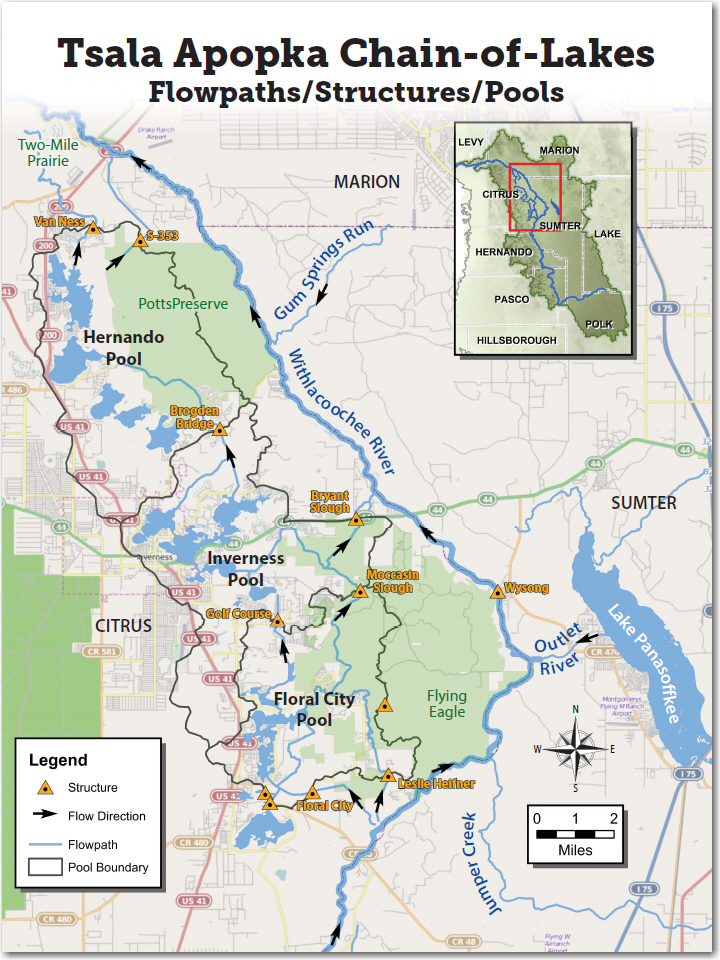
Tussock Lake in the Floral City Pool

Lake Panasoffkee and Wysong:
- Lake Panasoffkee rises and falls throughout the year based on changing inflows and outflows that are governed by rainfall.
- Incoming spring flows to Lake Panasoffkee have been dropping in recent weeks, due to less rain.
- Measured inflows from Little Jones Creek and Shady Brook fell by 17% in February.
- Outflow from Lake Panasoffkee to the Withlacoochee declined by 27% over the past month.
- Overall, Lake Panasoffkee water levels dropped about 2 inches last month.
- A few miles downstream from Lake Panasoffkee, along the Withlacoochee River, sits the Wysong Water Conservation Structure.
- Currently, the 230-foot-wide main gate at Wysong is fully raised, while the 19-foot-wide independent gate is partially raised.
- River flows at Wysong decreased by 43% in February.
- The table below compares current lake and streamflow conditions to what they were last month and last year.

Current Look at the Wysong Structure on the Withlacoochee River (March 1, 2023)
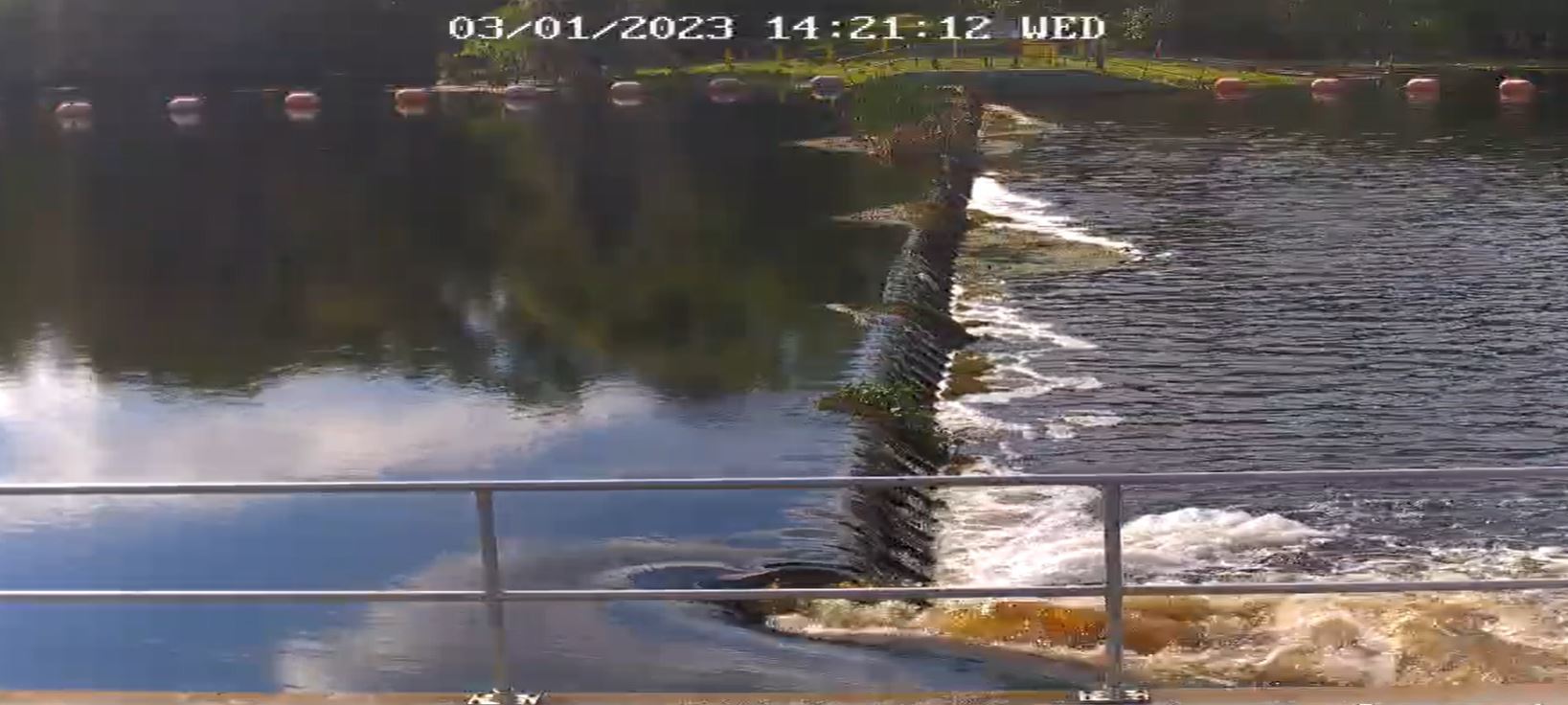
Lake Rousseau and the Lower Withlacoochee River (from Dunnellon to the Gulf of Mexico):
- Downstream from Dunnellon, the Withlacoochee River is influenced by water control structures on Lake Rousseau.
- Inflow to Lake Rousseau includes combined flows from the Withlacoochee and Rainbow Rivers.
- Withlacoochee River flow (which depends on rainfall and runoff from adjacent lands) declined by 32% over the past month.
- Flow in the Rainbow River (which reflects changes in aquifer levels) is 1.6% lower than it was a month ago.
- Overall inflows to Lake Rousseau are about 3% lower than they were this time last year.
- The Rainbow River is currently contributing 55% of the total flow entering Lake Rousseau.
- The Florida Fish and Wildlife Conservation Commission (FWC), along with the University of Florida, are planning to treat hydrilla on Lake Rousseau this spring.

- In the late 1960s, the way water flowed out of Lake Rousseau was fundamentally changed.
- A bypass channel was constructed because the Cross Florida Barge Canal severed the final 9 miles of the Withlacoochee.
- Today, the primary outlet from Lake Rousseau is through the Inglis Bypass Spillway to the Lower Withlacoochee River (see maps below).
- The Inglis Main Dam, which discharges excess flows to the Barge Canal, was closed in early January and remains closed.
- All flow is still passing downstream through the Bypass Spillway, which is currently flowing at about 60% of its capacity.
- Over the next few months, upstream flows are expected to continue to decline, causing less freshwater to pass downstream to the tidally influenced Lower Withlacoochee River.

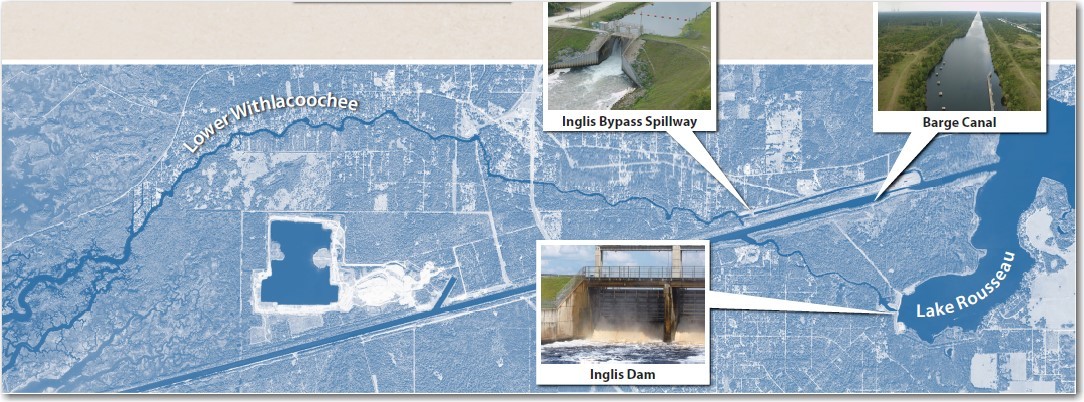
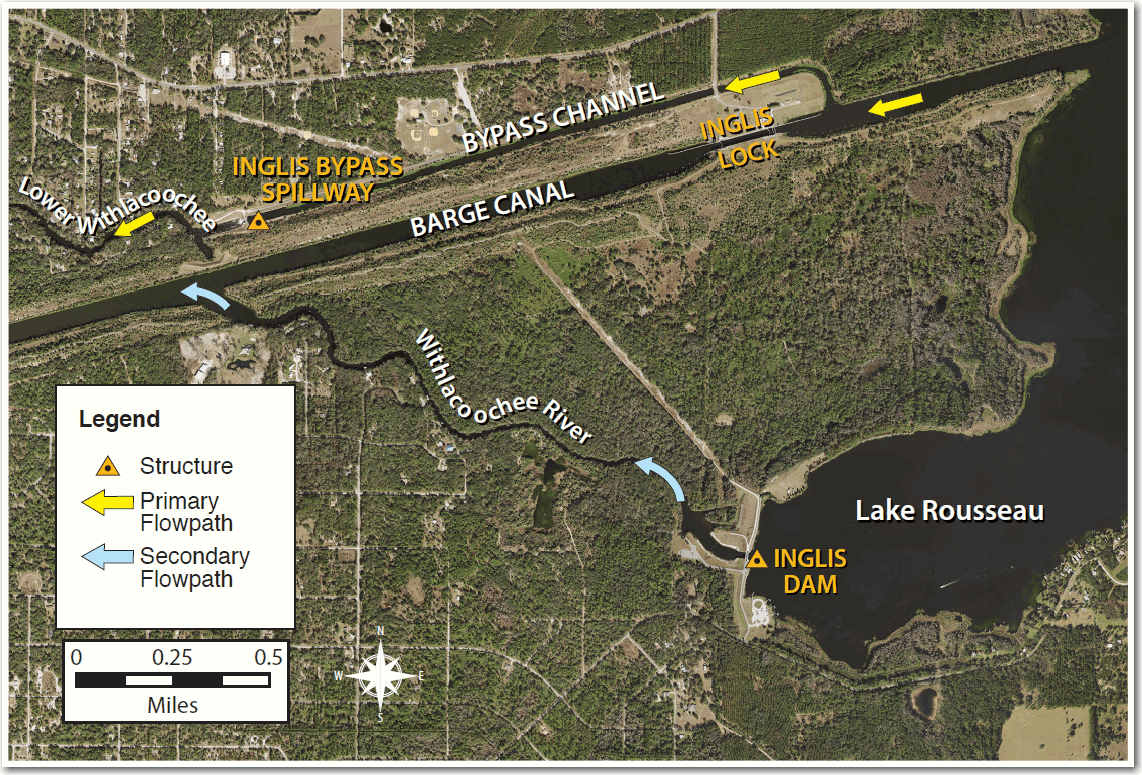
Have a blessed day!
Mark
Mark Fulkerson, Ph.D., P.E.
Chief Professional Engineer
Water Resources Bureau
Southwest Florida Water Management District
(352) 269-6073 (office)
(352) 279-4493 (cell)

